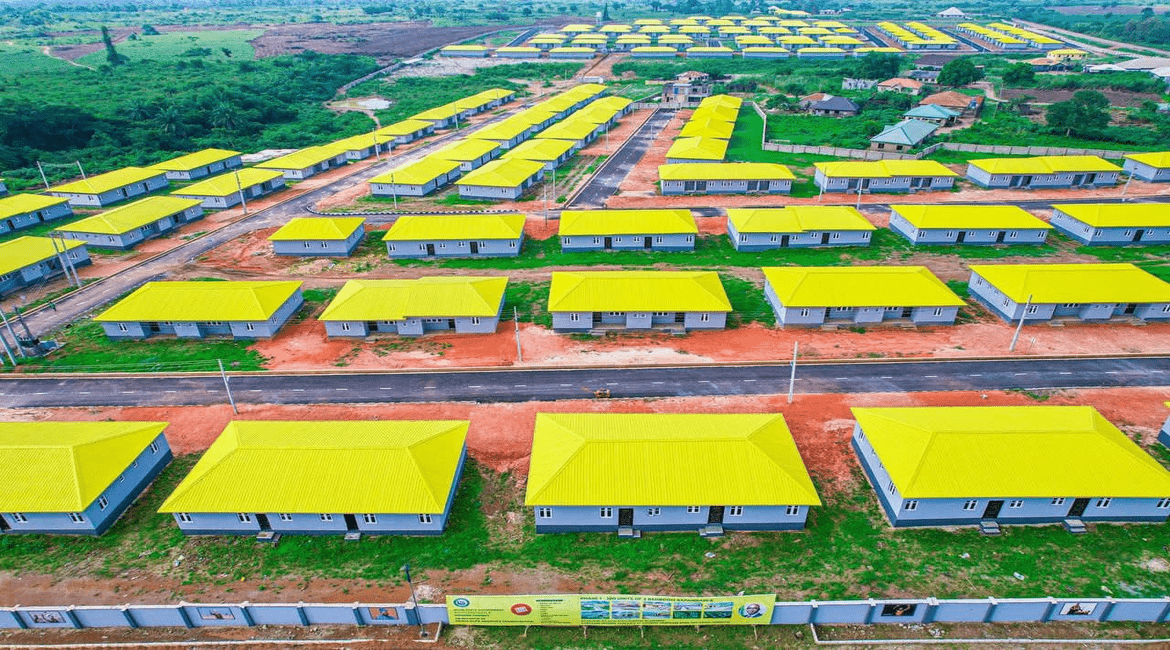An adjustable-rate mortgage (ARM) is a type of variable home loan that sees home mortgage payments vary increasing or down based on modifications to the lender's prime rate. The primary part of the home loan stays the same throughout the term, maintaining your amortization schedule.

If the prime rate changes, the interest part of the mortgage will immediately alter, changing greater or lower based upon whether rates have increased or reduced. This suggests you could instantly face higher mortgage payments if interest rates increase and lower payments if rates reduce.

ARM vs VRM: Key Differences
ARM and VRMs share some similarities: when rate of interest change, so will the mortgage payment's interest portion. However, the essential differences depend on how the payments are structured.
With both VRMs and ARMs, the interest rate will alter when the prime rate changes; however, this change is reflected in different methods. With an ARM, the payment changes with rates of interest changes. With a VRM, the payment does not adjust, just the proportion that approaches principal and interest. This suggests the amortization changes with interest rate changes.
ARMs have a rising and falling home mortgage payment that sees the primary portion stay the very same while the interest portion adjusts with modifications to the prime rate. This implies your mortgage payment could increase or reduce at any time relative to the change in interest rates. This permits your amortization schedule to stay on track.
VRMs have a set home mortgage payment that remains the very same. This means changes to the prime rate impact not only the interest however likewise the primary part of the home loan payment. As your rates of interest boosts or reductions, the amount going toward the primary portion of your home mortgage payment will increase or decrease to represent modifications in interest rates. This adjustment permits your home mortgage payment to stay set. A modification in your loan provider's prime rate might impact your loan's amortization and cause hitting your trigger point and, ultimately, your trigger rate, causing unfavorable amortization.
How Fixed Principal Payments Impact Your ARM
With an ARM, the amount that approaches paying your home mortgage principal stays the very same throughout the term. This implies that with an ARM, the portion of the home mortgage payment that goes toward decreasing your home mortgage balance remains constant, reducing the amortization despite modifications to rates of interest. Since home mortgage payments might change at any time if rates of interest alter, this type of mortgage might be best suited for those with the monetary versatility to handle any possible boosts in home loan payments.
Defining Your Mortgage Goals with an ARM
A variable-rate mortgage can potentially assist you conserve substantial cash on the interest you will pay over the life of your home loan. You would understand savings immediately, as falling rate of interest would mean lower payments on your home loan.
Additionally, adjustable home mortgages have lower discharge charge calculations when compared to fixed rates ought to you require to break your home mortgage before maturity. An ARM might be an excellent fit if you're a well-qualified borrower with the cash flow through your earnings or extra savings to weather potential boosts in your budget plan. An ARM needs a greater threat cravings.
Example: Adjustable-Rate Mortgage Performance in 2024
Let's take a look at how an ARM performed in 2024 as prime rates changed with changes to the BoC policy rate. The table below shows how monthly mortgage payments would have altered on a $500,000 home mortgage with a 25-year amortization and a 5-year term.
Over 2024, monthly payments decreased by $526.62 ($3,564.04 - $3,037.42) from the greatest payments made at the start of the year to the most affordable payments made at the end of the year using modifications to the prime rate.
How is a Variable-rate Mortgage Expected to Perform in 2025?
The table below shows the effect on regular monthly mortgage payments for the very same $500,000 mortgage with a 25-year amortization and a 5-year term. We've used forecasts for where rate of interest may be headed in 2025 to anticipate how an ARM might carry out over the year.
Over 2025, regular monthly payments have the prospective to decrease by $283.94 ($3,037.42 - $2,753.48) from the highest payments made at the beginning of the year to the least expensive payment made at the end of the year using possible modifications to the prime rate.
Why Choose an Adjustable Mortgage Rate?
There are numerous benefits to picking an adjustable home mortgage, including the potential to realize immediate cost savings if interest rates fall and lower charges for breaking the mortgage than set home loans. There are likewise extra benefits of selecting an ARM versus a VRM because your amortization stays on track despite changes to interest rates.
When compared to fixed-rate mortgages, ARMs use the advantages of much lower charges ought to you need to break the home mortgage or dream to switch to a set rate in the occasion rates of interest are anticipated to rise. Variable and adjustable home mortgages have a penalty of 3 months' interest, whereas set mortgages usually charge the greater of either 3 months' interest or the rates of interest differential (IRD).
Compared to VRMs, an ARM provides the benefit of immediate changes to your home loan payments when the prime rate changes. VRMs, on the other hand, won't realize these modifications till renewal. If rate of interest increase significantly over your term, you might wind up with unfavorable amortization on your mortgage and hit your trigger rate or trigger point. When this happens, you will be needed to reach your amortization schedule at renewal, which could indicate payment shock with considerably bigger payments than anticipated.
Which Variable Mortgage Rate Product is Best to Choose?
The very best variable home mortgage item will depend on your individual situations, including your financial scenario, danger tolerance, and brief and long-term goals. VRMs provide stability through fixed payments, making it simpler to preserve a budget for those who prefer to understand precisely just how much they will pay every month. ARMs provide the capacity for instant cost savings and lower home loan payments ought to interest rates reduce.
Benefits of VRMs for Borrowers
- Adjustable Rates Of Interest: VRMs have rate of interest that can fluctuate gradually based upon dominating market conditions. This can be advantageous as debtors might benefit, as they have traditionally, from lower rates of interest, leading to potential cost savings in the long run.
- Greater Financial Control: A lower prepayment charge on variable home mortgages makes it less expensive to extend the home mortgage payment period with a refinance back to the original amortization, and the potential to gain from lower interest rates offers customers higher monetary control. This capability permits customers to adjust their mortgage payments to better align with their existing monetary situation and make strategic decisions to enhance their total monetary objectives.
- Reduction in Gross Income: If the VRM is on a financial investment residential or commercial property, a debtor can increase the balance (home loan quantity) and the time (amortization) they take to pay down their home mortgage, potentially reducing their taxable rental income.

These benefits make VRMs a suitable choice for incorporated people or financiers who value flexibility and control in handling their home mortgage payments. However, these advantages also feature an increased threat of default or the possibility of increasing gross income. It is recommended that borrowers seek advice from a monetary organizer before choosing a variable mortgage for these advantages.
Benefits of ARMs for Borrowers
- Adjustable Rates Of Interest: ARMs have floating rates of interest, changing with the lender's prime rate sometimes based upon market conditions. Historically, it has actually benefitted debtors as they could benefit from lower rate of interest to conserve on interest-carrying costs.
- Greater Financial Control: Lower prepayment charges on ARMs make it less costly to refinance and extend your home loan payment term, while lowering your payment offers you more control over your financial resources. With a refinance, you can change your home loan payments to much better match your present financial circumstance and make smarter decisions to meet your general monetary goals.
- Increased Capital: ARMs recognize interest rate decreases on their home mortgage payment whenever rates decrease, possibly freeing up money for other household or savings priorities.

ARMs can be a helpful alternative for individuals and homes with well-planned budget plans who have a much shorter time horizon for settling their home mortgage and do not want to increase their mortgage amortization if rate of interest rise. With an ARM, preliminary rate of interest are traditionally lower than a fixed-rate mortgage, leading to lower month-to-month payments.
A lower payment at the onset of your amortization can be advantageous for those on a tight spending plan or who wish to assign more funds toward other monetary goals. It is advised for debtors to carefully consider their monetary situation and assess the potential risks related to an ARM, such as the possibility of greater payments if interest rates rise during their home loan term.
Frequently Asked Questions about ARMs
How does an ARM differ from a fixed-rate home mortgage in Canada?
An ARM has a rate of interest that changes and alters based upon the prime rate throughout the mortgage term. This can result in differing month-to-month home mortgage payments if rates of interest increase or reduce throughout the term. Fixed-rate mortgages have a rate of interest that stays the exact same throughout the home loan term, which results in mortgage payments that remain the exact same throughout the term.

How is the interest rate figured out for an ARM in Canada?
Rate of interest for ARMs are figured out based on the BoC policy rate, which directly affects lender's prime rates. Most lenders will set their prime rate based upon the policy rate +2.20%. They will then use the prime rate to set their discounted rate, typically a combination of their prime rate plus or minus extra portion points. The reduced mortgage rate is the rate they use to their clients.

How can I forecast my future payments with an ARM in Canada?
Predicting future payments with an ARM is challenging due to the unpredictability around the future of BoC policy rate decisions. However, keeping upgraded on market news and expert forecasts can assist you estimate possible future payments based on economic expert's projections. Once the discount on your adjustable mortgage rate is set, you can use the BoC policy rate predictions to estimate changes in your home mortgage payment utilizing nesto's home loan payment calculator.
Can I switch from an ARM to a fixed-rate home mortgage in Canada?
Yes, you can change from an ARM to a fixed-rate home loan anytime during your term. However, you will pay a penalty of 3 months' interest if you change to a brand-new lending institution before the term ends. You likewise have the choice to transform your ARM mortgage to a fixed-rate home loan without switching loan providers; although this alternative might not have a penalty, it might include a greater set rate at the time of conversion.
What occurs if I desire to offer my residential or commercial property or settle my ARM early?
If you sell your residential or commercial property or wish to pay off your ARM early, you will go through a prepayment penalty of 3 months' interest, similar to a VRM.
Choosing a variable-rate mortgage (ARM) over other mortgage products will depend on your financial capability and risk tolerance. An ARM might appropriate if you are solvent and have the danger cravings for possibly ever-changing payments throughout your term. An ARM can provide lower interest rates and lower month-to-month payments compared to a fixed-rate home mortgage, making it an appealing choice.
The crucial to identifying if an ARM is ideal for your next home loan lies in completely evaluating your financial circumstance, seeking advice from with a mortgage professional, and aligning your mortgage selection with your short and long-term monetary objectives.
Ready to get started?
In simply a couple of clicks, you can see our existing rates. Then request your mortgage online in minutes!



